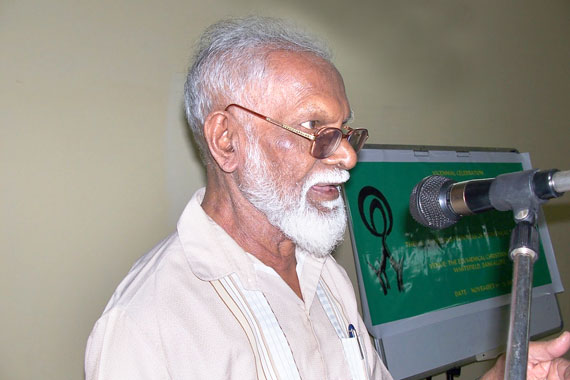Azadi ka Amrit Mahotsav Kolkata event honours four Clergymen
Pope Francis asks businesses to support working women: They’re ‘afraid to get pregnant’
Study: Christianity may lose majority, plurality status in U.S. by 2070
Indian politician declines Magsaysay Award under party pressure
Like John Paul II, Pope Francis heads to Kazakhstan during time of war

Among the Indian theologians, who attempted to develop the little narratives of liberative trend in the post Vatican Second era, the only notable figure alive may be Samuel Rayan, a Jesuit priest from Kollam who spends a calm life at Sameeksha, Kalady, Kerala. His work consisted in articulating liberative images of Christ suitable to the poor masses in India, which he used to empower people in resolving the issues of injustice and inequality.
Samuel Rayan’s Christological reflections emerge from his attempts to speak of God as one who is sensitive to man’s life-struggles. His interest is in a God who acts rather than in a God who exists. To him God’s presence is not merely in creation, wonders of nature and in the person of Jesus; but He becomes Immanuel in the liberative actions and events of history, in the all oppressed peoples and in all pursuit of justice and friendship. Jesus gave central place to suffering man in His mission and He became very much compassionate towards them. For Jesus, to become compassionate meant not merely to show kindness but to liberate them.
According to Samuel Rayan, Jesus’ response to the afflicted is seen in His discourse on the last judgment (Mt. 25: 31-46). We find there Jesus rewarding the poor and the victimized on earth with honour and prestige in heaven. To that end Jesus identified the poor with God. To the question of the righteous, ‘when did we see you hungry and thirsty’ (Mt. 25: 37), Lord says, ‘just as you did it to one of the least of these who are members of my family, you did it to me’ (Mt. 25:40). This answer is a revolution says Rayan. It shows that man cannot relate to God, Jesus or His kingdom without being with the poor and serving the marginalized masses. God and His Christ are where the oppressed are. He wrote in an article to Clergy Monthly, ‘to know God and His Christ is to care for the needs and rights of men … to feed the hungry and to clothe the naked means to struggle and to toil for the elimination of systems which exploit men, and to use all our resources of science and technical skill to create structures of freedom and fraternity in which all men can work and share with dignity and with hope.’
Rayan explains the mystery of redemption as regaining of the wholeness, fulfilment and completion of existence by setting man free from decay and bondage and by obtaining the freedom of the glory of children of God which is expressed in Rom 8:19-23. This has to be attained through rendering just human relationships. Jesus broke down the dividing walls among men by crucifixion (Eph 2:14). Therefore He says that it is in sharing and crucifying our bodies for the other that we can overcome the divisions and build up wholeness in life. Salvation is that of releasing man from the false economic and political structures that keep man divided between walls. It consists in remaking the structures that create equality, dignity and creative potential for all. Jesus’ healing ministry also has to be understood as part of the liberative mission. Following Christ is nothing but struggling for different world through sharing one’s own health and wealth for the outcast and demoted people.
The efforts taken by theologians like Samuel Rayan to critically look at the economic, social and political realities of Indian society in the light of faith is different from the traditional concern of the Indian theologians to translate Christ in the multi-religious context of India. This liberative sensitivity gives birth to a number of variables within the Indian theology of liberation which are generally known to be the Subaltern theologies. It has made Christ more popular and relevant to the critical thinkers and to the oppressed segments of Indian population namely Dalits and Tribals. Certainly, Indian Christology has come of age, but yet it has miles to go to bring about a really deep encounter between Christ and the multi-facetted poverty in this country.
kundu1962@gmail.com
Leave a Comment